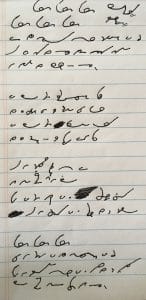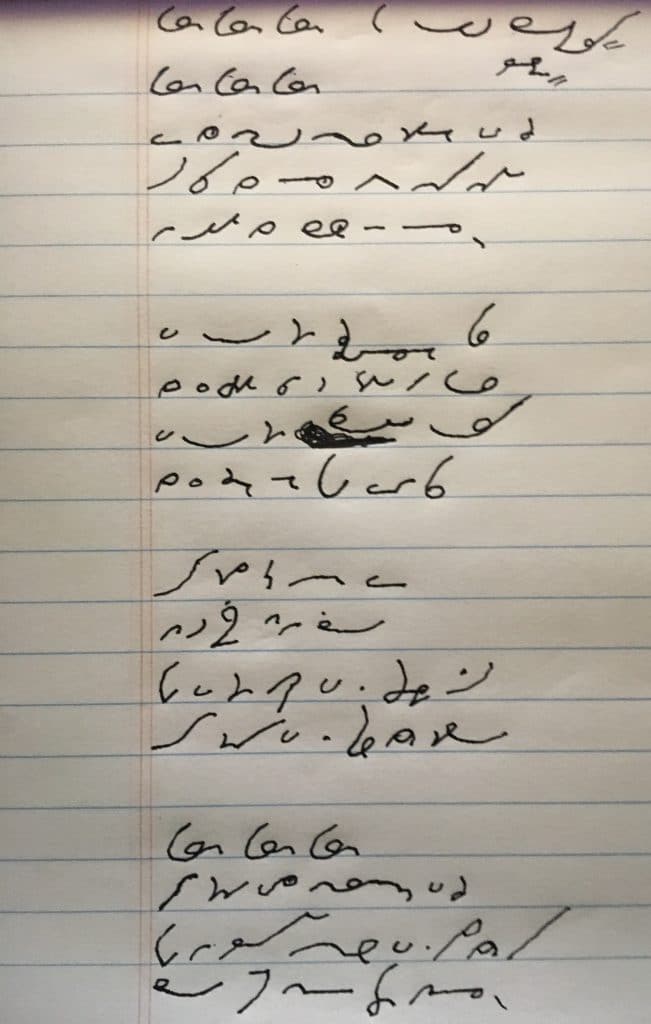
So I have been a part of this blog for a few months now, and I want to contribute. I’m just mostly too embarrassed to put anything up; nonetheless, here is my contribution. Please critique to the fullest! This took me roughly around 4-5 min. to jot down. I’m still working on theory more than speed.
Lord Alfred Tennyson’s “Break Break Break.” (Sorry for the scratch outs!)
With corrections:

Attachment: break-break-break.jpg
You can send me the original scan and I can host it.
This is a good start! Your proportions are good and they will get even better. There are mistakes in outlines, mostly because you need to memorize brief forms! Other than that, it’s just practice.
1. “stone” is written with the o-hook on the side before n
2. “I would” is a phrase (a – d) and “would” is a brief form.
3. “tongue” is written with the ng stroke, and following the rule of omission of short u (t – ng)
4. “could” is a brief form (k – d)
5. “thoughts” is written with the under th following the rule that we use under th before o, r, and l.
6. “well” is a brief form (l)
7. “fisherman” – there is an e-circle between sh and r.
8. “his” is a brief form (s)
9. “sister” – the ses blend starts with the left s.
10. “at” is a brief form (t)
11. “sings” has a circle vowel between the s and the ng.
12. “in his” is a phrase (n-s)
13. “boat” – the o is naturally joined to the b (just write bo) and the t is added last.
14. “and the” is a phrase (nd -th)
15. “stately” is a brief form derivative (st – e), with the e being written clockwise
16. “ships” is a brief form derivative (sh – s)
17. “their” is a brief form (under th)
18. “touch” – the vowel is omitted under the omission of short u rule (t – ch)
19. “vanished” – the e circle is omitted
20. “hand” is a brief form derivative (h dot – nd)
21. “sound” – the “ou” is omitted under the omission of ou rule
22. “tender” is written with the ten blend (ten blend – d – r)
23. “that is” is a phrase (over th – a – right s)
24. “dead” – the circle vowel is not written in that blend
25. “never” is a brief form (n-v)
26. “to me” is a phrase (tem blend – e)
Lastly, “Tennyson” is written with the blend (ten blend – e circle – right s – n).
Lol, thank you. I certainly have much to improve on, but thank you for your help. I need it!
You’re welcome! Just keep writing. Like I said, most of the mistakes are because you are still learning theory.
One thing to do to help you remember the theory better is the following. Once you learn a lesson in Simplified (and learning means to read it like you read a book, without hesitation and without pausing), copy the lesson in your notebook in your best shorthand and read the outlines aloud as you are writing it. In that way, the outlines will be better retained because you will be associating the sound with the outline.
I added the new jpg to the post.